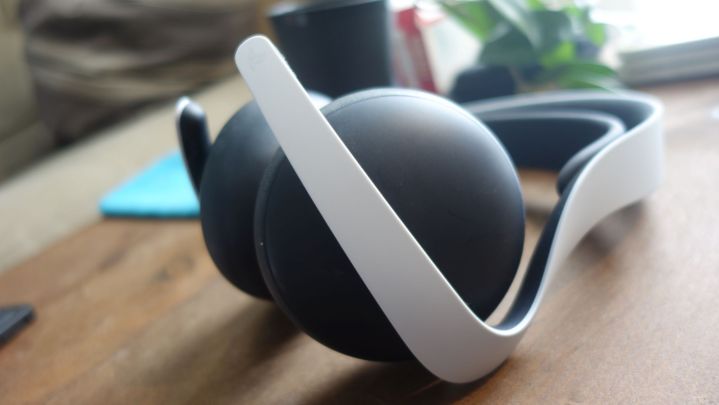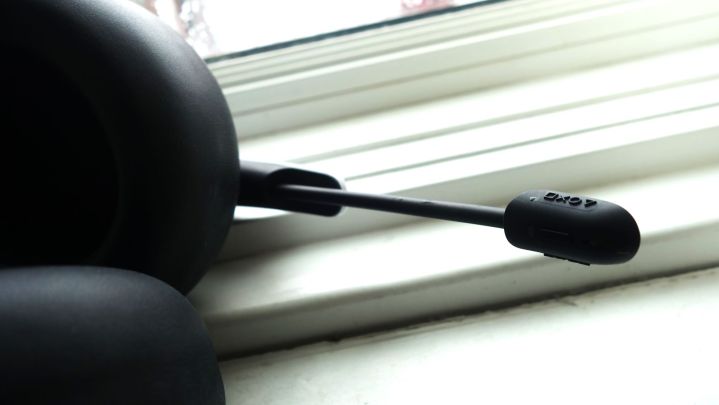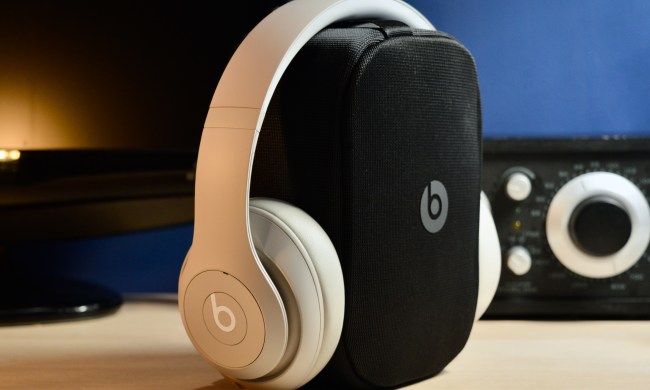
- Discrete microphone
- Innovative charging mount
- Great sound quality
- Long battery life
- Dual connectivity
- Loose fit
- Distortion at high volumes
- Portal integration is lacking
PlayStation has been busy over the last two years. The brand hasn’t just been busy pumping out award-winning games during the PS5 era; it’s been building an Apple-like tech ecosystem right under our noses. That reality became fully clear last year when Sony launched its PlayStation Portal handheld. The accessory came with one odd catch: it didn’t support Bluetooth. To use a wireless headset, players would need to buy some specific earbuds or headsets that support Sony’s new PlayStation Link tech. It was a smart, but frustrating move that gave PlayStation owners incentive to keep buying first-party Sony accessories.
Just a few months removed from the Portal launch, we’re seeing the next step in Sony’s product playbook with the Pulse Elite. Sony’s latest headset isn’t just custom-made for
The good news is that the Pulse Elite is a fairly good investment if you’re fully bought into the
Design and comfort
The Pulse Elite is designed to match the

It’s certainly a visual statement, but one with some function. The Pulse Elite’s microphone is stealthily housed in the left arm. It can be quickly unsheathed from the tip by pushing the plastic forward, revealing a flexible mic arm hidden within. It’s a great design detail that lets players keep their microphone hidden when it’s not in use without having to keep track of a detachable add-on.
My favorite design innovation here, though, is the Pulse Elite’s unique charging system. There’s a traditional charging port underneath the right arm (I can use the same cord I use to charge my DualSense controllers), but you’ll notice an odd little latch point under the headband. The Pulse Elite comes with a plastic hook that slots into that spot. It can be screwed into a well and connected to a cord, creating a wall mount that charges the headset while it’s hanging by the headband. It’s a practical, dual-function design that makes the $150 headset feel a bit more premium.
It’s more comfortable than the competitively rigid Pulse 3D.
As for comfort, I’ve felt no strain using the Pulse Elite during multi-hour gaming sessions. That’s partially thanks to the fact that it features a second, softer headband underneath the main one. It’s an arch of black plastic that stretches and squashes to fit multiple head sizes and shapes. That, combined with pillow-soft earcups, make it more comfortable than the competitively rigid Pulse 3D.
There’s one catch to that, though. The Pulse Elite is strangely loose-fitting on my head. It’s great that it’s not squeezing the life out of me, but Sony went a little too far here. It begins to slide down my head anytime I lift my chin to take a drink. Perhaps that won’t be a problem for people with bigger heads, but they’re far too wiggly for my own, with no real option to adjust the tightness that I can find. It’s not a deal breaker, but it does mean I have to stay fairly still when using it.
Sound quality
The Pulse Elite really stands out where it counts: audio quality. Naturally, Sony has tuned the headset to get the most out of the PS5’s 3D audio. That’s noticeable. When I’m playing Helldivers 2, I can pinpoint exactly where my teammates’ gunfire is coming from. That’s exactly what you want from a
The headset produces detailed sound across ranges. Helldivers 2 would serve as a perfect test case as it’s full of crisp and detailed sounds. When I’m jumping into a pod to queue up for a match, I can hear every clang as I lock into the metallic device. Gunshots are sharp and impactful, with a bit of bass under the shot to emphasize the burst. Tests in Foamstars and Final Fantasy VII Rebirth’s demo gave me similar results, as I was able to get those most out of the former’s jazzy soundtrack and the latter’s hectic fights.

What’s unfortunate is how distorted sound gets at high volumes. When cranking them all the way up, I quickly got some harsh sounds in the Rebirth demo’s fights. Additional tests at high volumes produced similar results. When connecting to Spotify and blasting some Noname, I got a lot of crunchy distortion on the low end. That mostly happened at max volume and would resolve when moving down a tick or two, but that still places an unfortunate limit on my volume options.
As for the microphone, the audio quality is acceptable even if it sounds like a standard gaming headset mic rather than a $150 one. What I will applaud there is the Pulse Elite’s “AI-enhanced” noise rejection. When I’m not talking, the mic goes dead silent. I ran some recording tests where I spoke while music played very close to the mic in the background. Anytime I stopped talking, no music bled through. And when I did speak, the music was very faint underneath my voice. That’s great, as it means you won’t need to turn your TV down if you’re using chat through something like Discord on your phone.
Battery life
During the

Sony claims that the Pulse Elite’s battery can last up to 30 hours. While it’s hard to gauge how consistent that figure is, I can attest that the battery lasts much longer than those in other Sony headsets I’ve used. In my first go-round with it, I wore it for a three-hour gaming session, picked it up for a handful of one- to two-hour sessions over the course of a week, and tooled around with testing it on both PC and mobile. After all that time, I still had three battery ticks. That’s a wonderful change of pace for PlayStation accessories.
Charging is a snap too, as Sony touts that a 10-minute charge will net players two hours of battery life. That fact, combined with its innovative mounting hook charging solution, makes the Pulse Elite much easier to use than the Pulse 3D. I never have to worry about whether or not the battery will run out on me. Even when it does, it doesn’t take long to get back up to speed so I can finish up a gaming session.
Connectivity and customization
Where the Pulse Elite starts to get a bit weird is in its connectivity. The headset is Bluetooth-enabled, which makes it easy to connect to a phone or other devices, but its big feature is its PlayStation Link integration. That’s Sony’s new audio tech that boasts “lossless and lightning-fast ultra-low latency” — though its more tangible purpose is getting PlayStation players to buy Sony earbuds and headsets to keep all its devices in one consistent ecosystem.
There’s some good and bad side effects of that decision. On the plus side, the Pulse Elite can simultaneously connect to two devices via Bluetooth and PlayStation Link. I was able to connect to my phone to use

The bad news is that you kind of have to buy a Pulse Elite if you want to use a wireless headset on PlayStation Portal. That device doesn’t support Bluetooth or leave room for a dongle, so you’re stuck either buying this pricey headset or Sony’s new (and even pricier) Pulse Explore earbuds. The Pulse Elite is at least a solid headset, so it’s not the worst fate, but one design flaw torpedoes its utility.
By pressing the PlayStation Link button three times while connected to
I hope Sony can iron out quirks like that as it experiments with new product lines using PlayStation Link.
While that’s ultimately a niche use case, it’s a bit frustrating considering the forced ecosystem Sony is creating here. If I have to buy specific headsets to get wireless audio on devices like the Portal, I don’t think it’s unfair to expect consistency. I imagine that’s a specific problem with the Portal since it’s a remote play device, but I hope Sony can iron out quirks like that as it experiments with new product lines using PlayStation Link. If not, the whole experiment will get frustrating fast.
It’s not like you have a lot of options, though. If you want a solid premium headset that easily connects to every PlayStation device you own, the Pulse Elite is the best out there … by default. I’m thankful that Sony at least made sure it was an option worth owning, with great sound and innovative design, but I’m not convinced that it’s worth losing Bluetooth entirely to keep all my PlayStation accessories in harmony.




